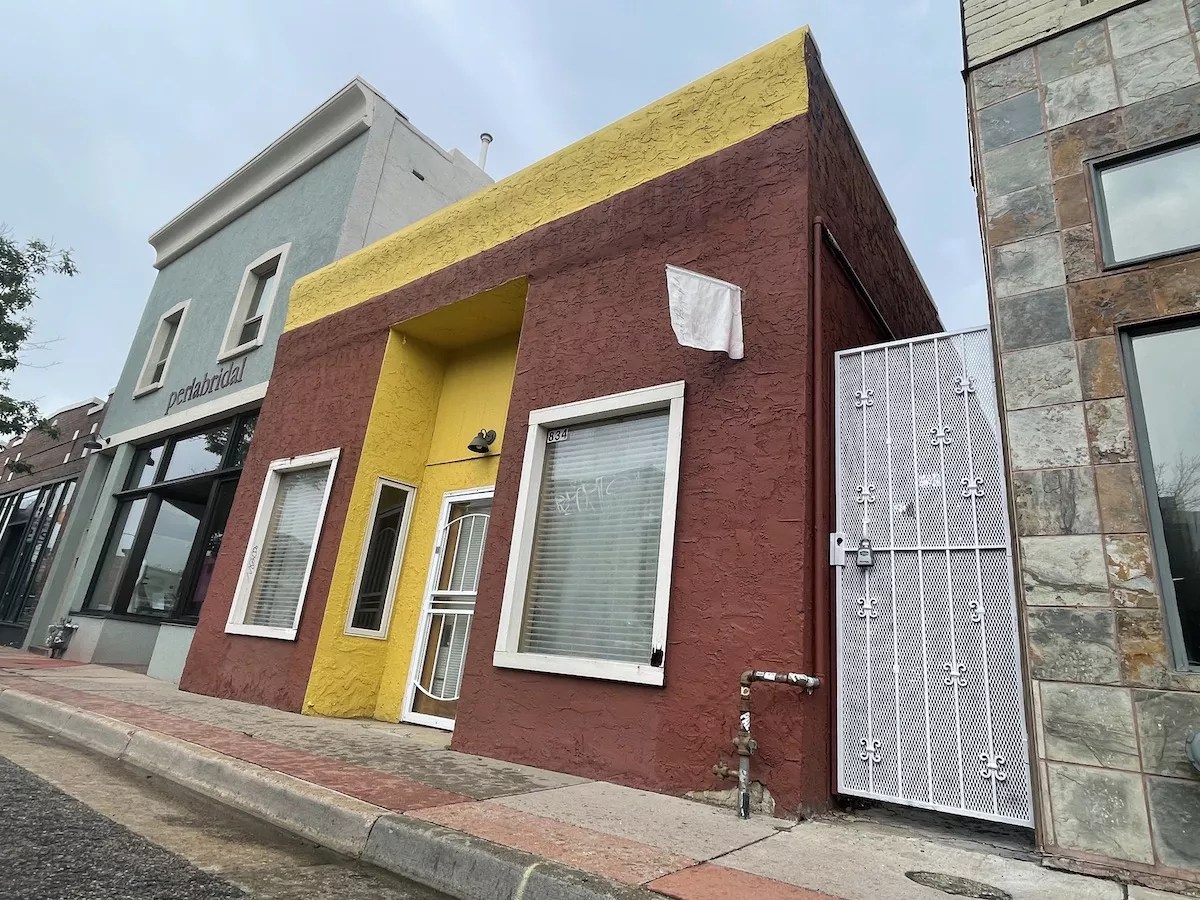
Bennito L. Kelty

Audio By Carbonatix
After Denver’s mile-high rent forced the Chicano Humanities and Arts Council off Santa Fe Drive and out of the heart of the city’s historic Chicano neighborhood, executive director Brenda Gurule thought CHAC would have to make do with a spot in Lakewood for the foreseeable future, if not forever.
But then came a “huge blessing,” she says. Kyle Schneider, the son of late artist Katherine Payge, gave a gallery building his mother owned at 834 Santa Fe to CHAC.
“Never in our wildest dreams, we never imagined we would own property or have our own gallery, let alone on Santa Fe,” says CHAC board chair Renee Fajardo.
“For the first time, we’re able to still maintain our grassroots programming and image and vision, while Kyle Schneider’s gift makes us sustainable,” Fajardo adds. “We’re going to be able to start saying, ‘We’re here, we’re good,’ at the event this Friday.”
And that would be the first First Friday celebration at CHAC’s current home since news of the gift broke.
But CHAC’s been moving quickly since then. The group recently finished a $10,000 project to renovate the patio of their future home, which had been the Kat Payge Art Gallery. And while CHAC won’t have a mortgage there, it is working to raise money for more renovations, including an accessible bathroom, as well as an endowment for ongoing expenses.
Payge had bought the building in 2017 for $1.35 million, though it’s valued at around $460,000 in City of Denver records. After she passed, Schneider researched nonprofits online, then decided to give it to CHAC.
“He knew we needed a space because we didn’t have a space, we didn’t have a home to call ours,” Gurule says. “The gallery was in great shape overall because it was [Payge’s] personal gallery.”
Payge also owned 900 Santa Fe Drive; that building was sold in 2022 but still houses Spark Gallery and D’Art Gallery, which took over for Core New Art Space when that gallery moved to Lakewood.
“We feel like in a way we’re going back home,” Gurule says. “That’s where [CHAC] grew…that’s where our roots are, and that’s where we belong.”
A group of Chicano artists banded together to form CHAC in 1978; the group’s first home was in the basement of St. Patrick’s Catholic Church in north Denver. In 1986, it moved to a building at 725 Santa Fe; today that address is a parking lot next to Su Teatro Cultural and Performing Arts Center.
In 1990, CHAC moved to Platte Street, then the Sunnyside neighborhood, then another spot in Highland. Finally, it relocated to 772-774 Santa Fe in 2003, the same year that Denver’s Art District on Santa Fe was founded. The gallery grew along with the district, which soon was attracting thousands of people to First Friday events.

The building on Santa Fe Drive is only big enough for a gallery, so CHAC will keep offices and a small space in Lakewood.
Bennito L. Kelty
“We bounced around a lot,” Fajardo says. “Finally, when we landed on Santa Fe, that’s where we were able to have a place that we were actually connected to and tied to. That’s really what the Santa Fe Art District gave to CHAC; it was a home that was permanent. We weren’t bouncing around, always trying to scrape together rent.”
But with the area’s popularity came increasingly valuable real estate. When its landlord sold the building in 2018, CHAC moved down the street to 222 Santa Fe. But it was priced out there in 2022, when rent rose to nearly $4,000 a month. With much less foot traffic at that location, covering the rent was “impossible for someone as small as we are,” Fajardo says.
“That’s something you really need for a gallery like us: You have to have people coming through that are walking there,” she explains. “Because otherwise, it’s just once a month during First Friday, but we need that traffic.”
After finding nothing affordable in Denver, CHAC took over the 40 West Gallery space in Lakewood, when the 40 West District moved into the former Denver Drumstick in the same area that’s home to Casa Bonita.
CHAC will move out of the Lakewood gallery at the end of August but continue to rent space in the 40 West complex for programs, a second gallery and an office, since the building at 834 Santa Fe is “not big enough to have offices,” Fajardo says.
Having locations in both Denver and Lakewood is “a win-win, because we still get to be back on Santa Fe and have our presence,” Fajardo says, adding that “the people at 40 West have been really good to us also. By keeping our offices over there and operating our gallery, we’re actually going to be able to bridge that connection between the communities in Jefferson County and Denver.”
CHAC, which today has about 140 members, plans to open the new space in time for its traditional Día de los Muertos celebration, which will begin October 6.
Other Santa Fe institutions are eager to welcome back CHAC. Su Teatro, which paid off its mortgage at the beginning of the year, will match some donations, as will the Colorado Folk Arts Council and the Familia Fajardo-Anstine. The New CHAC spot is right across the street from Museo de las Americas, whose executive director, Claudia Moran, “has always been a great supporter of CHAC,” Gurule says.
So at this First Friday, one of its last in Lakewood, CHAC will have plenty to celebrate. The Weaving Generations exhibit, which is already on display, “speaks to what’s going on at CHAC,” concludes Fajardo, “and how we have generations upon generations converging to help bring us to where we are today.”